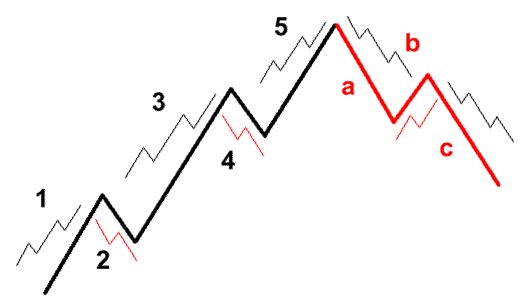Forex The Elliott Wave Theory For Forex Markets
Post on: 10 Октябрь, 2015 No Comment

Saturday, June 12, 2010
The Elliott Wave Theory For Forex Markets
by David Mclauchlan,
First what is Forex: The FOREX or Foreign Exchange market is the largest financial market in the world, with an volume of more than $1.5 trillion daily, dealing in currencies. Unlike other financial markets, the Forex market has no physical location, no central exchange. It operates through an electronic network of banks, corporations and individuals trading one currency for another.
The Forex, or foreign currency exchange, is all about money. Money from all over the world is bought, sold and traded. On the Forex, anyone can buy and sell currency and with possibly come out ahead in the end. When dealing with the foreign currency exchange, it is possible to buy the currency of one country, sell it and make a profit. For example, a broker might buy a Japanese yen when the yen to dollar ratio increases, then sell the yens and buy back American dollars for a profit. One of the best known and least understood theories of technical analysis in forex trading is the Elliot Wave Theory. Developed in the 1920s by Ralph Nelson Elliot as a method of predicting trends in the stock market, the Elliot Wave theory applies fractal mathematics to movements in the market to make predictions based on crowd behavior. In its essence, the Elliot Wave theory states that the market in this case, the forex market moves in a series of 5 swings upward and 3 swings back down, repeated perpetually. But if it were that simple, everyone would be making a killing by catching the wave and riding it until just before it crashes on the shore. Obviously, there’s a lot more to it.
One of the things that makes riding the Elliot Wave so tricky is timing of all the major wave theories, it’s the only one that doesn’t put a time limit on the reactions and rebounds of the market. A single In fact, the theories of fractal mathematics makes it clear that there are multiple waves within waves within waves. Interpreting the data and finding the right curves and crests is a tricky process, which gives rise to the contention that you can put 20 experts on the Elliot Wave theory in one room and they will never reach an agreement on which way a stock or in this case, a currency is headed.
Elliot Wave Basics
Every action is followed by a reaction.
It’s a standard rule of physics that applies to the crowd behavior on which the Elliot Wave theory is based. If prices drop, people will buy. When people buy, the demand increases and supply decreases driving prices back up. Nearly every system that uses trend analysis to predict the movements of the currency market is based on determining when those actions will cause reactions that make a trade profitable.
There are five waves in the direction of the main trend followed by three corrective waves (a 5-3 move).
The Elliot Wave theory is that market activity can be predicted as a series of five waves that move in one direction (the trend) followed by three ‘corrective’ waves that move the market back toward its starting point.
A 5-3 move completes a cycle. And here’s where the theory begins to get truly complex. Like the mirror reflecting a mirror that reflects a mirror that reflects a mirror, the each 5-3 wave is not only complete in itself, it is a superset of a smaller series of waves, and a subset of a larger set of 5-3 waves the next principle.
This 5-3 move then becomes two subdivisions of the next higher 5-3 wave.
In Elliot Wave notation, the 5 waves that fit the trend are labeled 1, 2, 3, 4 and 5 (impulses). The three correcting waves are called a, b and c (corrections). Each of these waves is made up of a 5-3 series of waves, and each of those is made up of a 5-3 series of waves. The 5-3 cycle that you’re studying is an impulse and correction in the next ascending 5-3 series.
The underlying 5-3 pattern remains constant, though the time span of each may vary.
A 5-3 wave may take decades to complete or it may be over in minutes. Traders who are successful in using the Elliot Wavy theory to trade in the currency market say that the trick is timing trades to coincide with the beginning and end of impulse 3 to minimize your risk and maximize your profit.
Because the timing of each sequence of waves varies so much, using the Elliot Wave theory is very much a matter of interpretation. Identifying the best time to enter and leave a trade is dependent on being able to see and follow the pattern of larger and smaller waves, and to know when to trade and when to get out based on the patterns you identify.
The key is in interpreting the pattern correctly in finding the right starting point. Once you learn to see the wave patterns and identify them correctly, say those who are experts, you’ll see how they apply in every facet of forex trading, and will be able to use those patterns to trigger your decisions whether you’re day trading or in it for the long haul.














